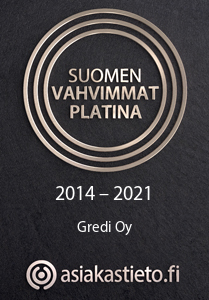Smart digital tools for service development

Chargeable services have become common in several educational institutions. The demands of working life have changed, lifelong learning has become the basic premise and only a few workers are able to build their careers based on one single long-term education. Educational institutions have responded to this demand by, for example, arranging short, specific training to improve professional skills and developing the course offerings of the Open University of Applied Sciences and the University.
Educational institutions cooperate with businesses
Developing cooperation with businesses can be found on the agenda of the educational institutions that understand the big picture. On-the-job learning and internship periods in companies, as well as writing theses work for companies are well-established ways to cooperate in many training institutions. Economic cooperation such as sponsorships is still in the development stage in Finland. And quite tightly regulated if compared to, for example the U.S. practices. A lot is to be done in the systematic commercialization of research results.
For companies, cooperation with educational institutions provides ways for developing staff skills and business operations as well as creates channels for recruiting future experts.
In recent years measurement has gained ground in the world of education. University rankings have become a valuable benchmarking tool and a decision-making criterion. On the basis of rankings, strategic solutions are already being made and operations are being developed. A good ranking will increase the reputation of the university and attract talented researchers, teachers and students who will boost the educational organization for ever better success.
An educational institution can develop its reputation by improving its visibility. Digital Asset Management solutions facilitate ongoing communication and public relations practices and the institution’s reputation and brand management.
Internationality is considered one of the indicators of high quality education. If an educational institution has a lot of international cooperation and visibility in for example international publications its reputation and awareness will improve. When partnering with a company and doing international cooperation the educational institution opens a door for business where the business potential is often greater than on the educational side. Research cooperation with companies often receives greater visibility when the information is shared in multi-party networks. They also arouse interest in other companies and generate follow-up projects if the results are commercially exploitable.
E-learning environment
E-learning environments transfer teaching to a channel that is easily replicated and distributed. A single online course or series of lectures reaches a multiple number of participants compared to traditional classroom training. At the same time the institution will meet the demand of a 24/7 society for a service that is independent of time and place.
By eliminating repetitive routines of teaching, such as repeating lecture series, the teaching staff can focus on refining the quality and actuality of the content.
The backbone of an efficient e-learning environment is a Digital Asset Management system. It is the heart of the learning ecosystem and an efficient tool for information management, material production and distribution. The Digital Asset Management system ensures that the correct information is transmitted to the recipient without errors, in a timely manner and in the desired format and channel.
The expertise will be automatically distributed through digital channels to the recipients of your choice with the tools of Digital Asset Management preset publication times.
Digital Asset Management supports educational institutions
Digital Asset Management makes it easier to manage the visible image of an educational institution. Digital publishing tools help you target your communications to different target groups. At the same time, they measure the effectiveness of your message and provide information about internal workflows to support decision-making. Regular communication to an up-to-date target group and the development of communication based on analysis and customer feedback will make your institution work smarter.
Digital Asset Management supports your institution’s brand and visual image management with tools such as dynamic publishing templates. They allow your content-production experts to distribute brand-managed, unified material to different channels in a timely manner. Your international sales will be strengthened when you implement ready-made operating models for asset management, for example for the management and production of language versions.
Digital Asset Management enhances the internal and external flow of information in the educational institution. It connects units and breaks down barriers. A more open and unified flow of information also prevents duplication and unnecessary work – and saves working time.
« Emotional images are at the core of a visual brandBrand equity in the midst of crisis »






